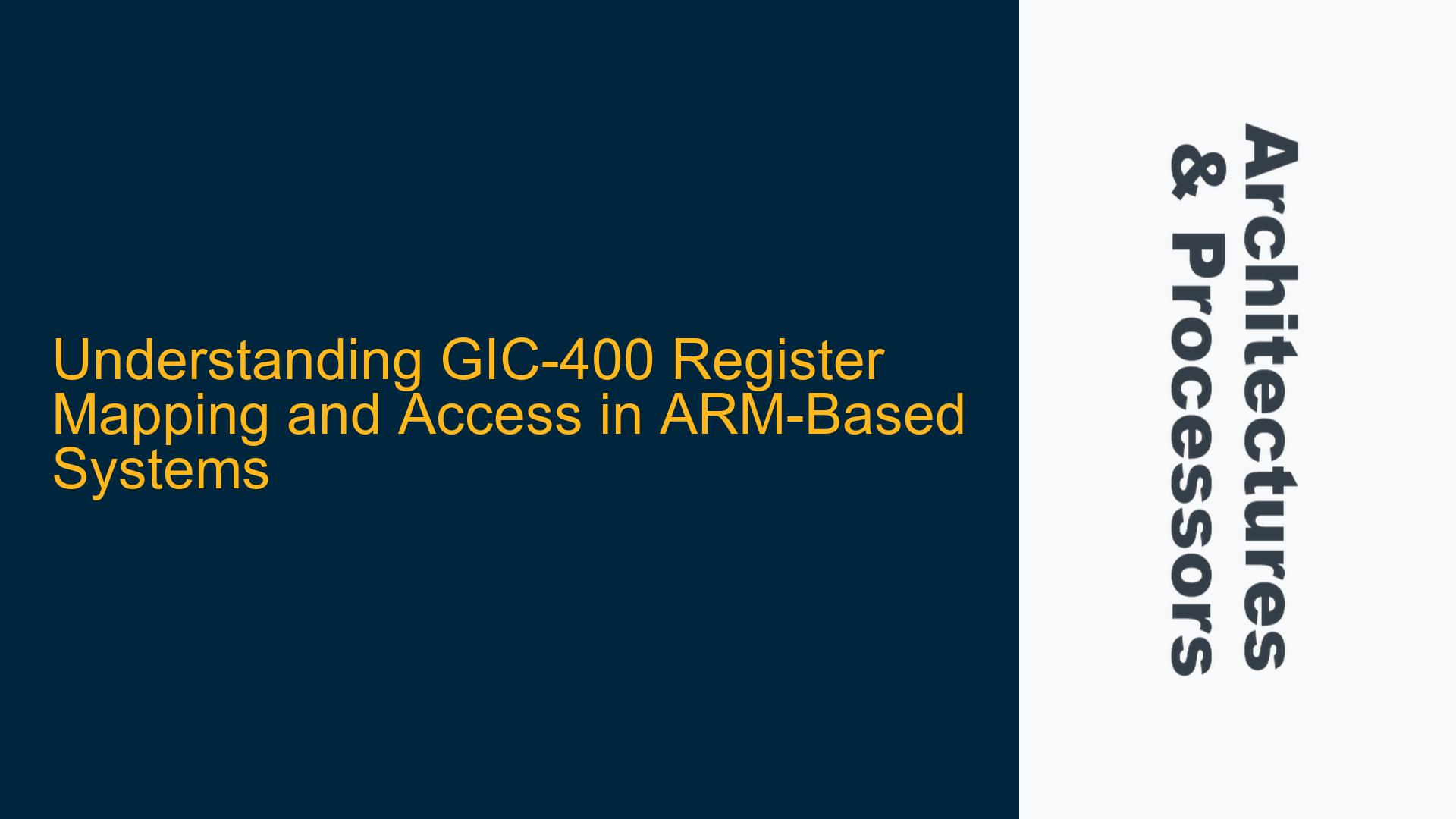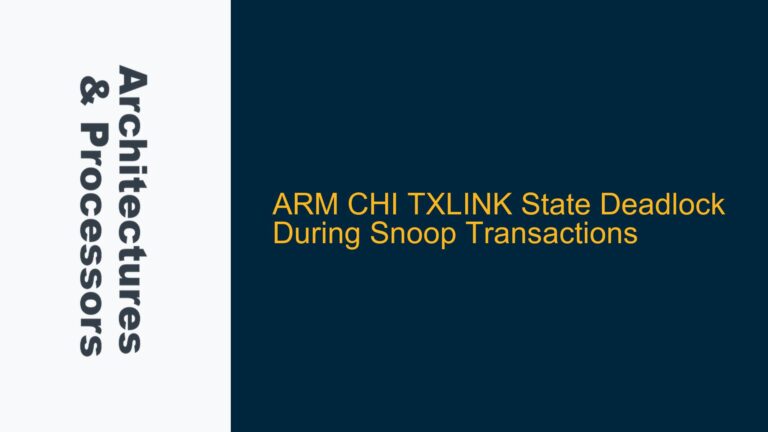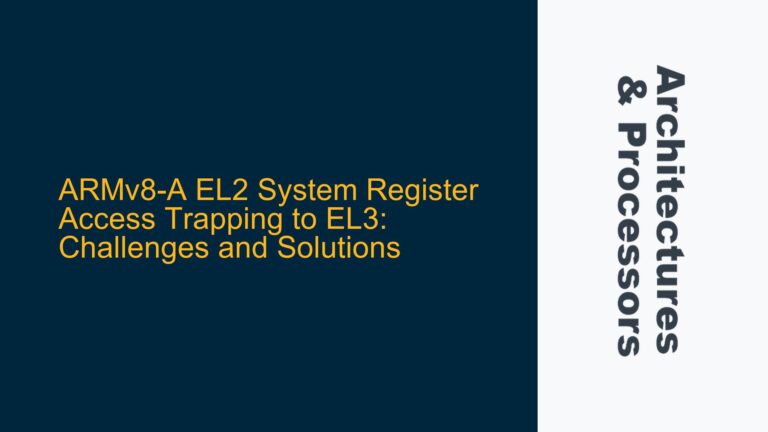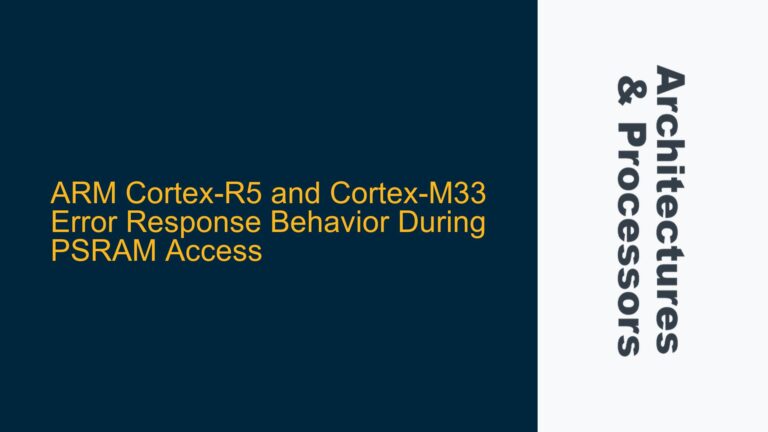GIC-400 Register Mapping and Access Challenges in RK3308 SoC
The Generic Interrupt Controller (GIC) is a critical component in ARM-based systems, responsible for managing and routing interrupts to the appropriate CPU cores. In the context of the Rockchip RK3308 SoC, which utilizes the ARM GIC-400, understanding the register mapping and access mechanisms is essential for effective interrupt handling. The GIC-400 is mapped to a specific base address in the memory space, and its registers are distributed across multiple regions, each serving a distinct purpose. The primary challenge lies in correctly interpreting the device tree bindings and the ARM documentation to determine the base offsets for each register set, including the Distributor (GICD), CPU Interface (GICC), Virtual Interface Control (GICH), and Virtual CPU Interface (GICV) registers.
The device tree snippet provided in the discussion reveals four distinct memory regions associated with the GIC-400, each with a specific base address and size. These regions correspond to the GICD, GICC, GICH, and GICV registers, respectively. The base addresses for these regions are 0xff581000, 0xff582000, 0xff584000, and 0xff586000, with sizes of 0x1000, 0x2000, 0x2000, and 0x2000 bytes. However, the exact mapping of these addresses to the specific GIC-400 registers is not immediately apparent from the device tree alone, necessitating a deeper dive into the ARM GIC-400 documentation.
Misinterpretation of Device Tree Bindings and ARM Documentation
One of the primary causes of confusion in accessing GIC-400 registers is the potential misinterpretation of the device tree bindings and the ARM GIC-400 documentation. The device tree provides the physical base addresses and sizes for the GIC-400 regions, but it does not explicitly state which region corresponds to which set of registers. This ambiguity can lead to incorrect assumptions about the register mapping, resulting in improper access to the GIC-400 registers.
Additionally, the ARM GIC-400 documentation, while comprehensive, can be challenging to navigate for those unfamiliar with the GIC architecture. The documentation describes the register map in detail, but it does not always provide a clear correlation between the register offsets and the physical addresses specified in the device tree. This disconnect can make it difficult to determine the correct base offsets for each register set, particularly when dealing with multiple CPU cores and their associated CPU Interface registers.
Another potential source of confusion is the distinction between the Distributor and CPU Interface registers. The Distributor registers are responsible for managing global interrupt configuration and routing, while the CPU Interface registers are specific to each CPU core and handle interrupt acknowledgment and prioritization. Misunderstanding this distinction can lead to incorrect register access, particularly when attempting to configure or manage interrupts for a specific CPU core.
Correctly Mapping GIC-400 Registers and Accessing Them in Software
To correctly map and access the GIC-400 registers in the RK3308 SoC, it is essential to follow a systematic approach that combines insights from the device tree bindings and the ARM GIC-400 documentation. The first step is to identify the base addresses for each GIC-400 region from the device tree. In the case of the RK3308, these addresses are 0xff581000 for the GICD, 0xff582000 for the GICC, 0xff584000 for the GICH, and 0xff586000 for the GICV.
Once the base addresses are identified, the next step is to consult the ARM GIC-400 documentation to determine the register offsets for each region. The documentation provides a detailed register map, including the offsets for the Distributor, CPU Interface, Virtual Interface Control, and Virtual CPU Interface registers. For example, the GICD registers are typically located at an offset of 0x0000 from the base address, while the GICC registers are located at an offset of 0x2000.
To access these registers in software, it is necessary to define the appropriate memory-mapped I/O (MMIO) addresses based on the base addresses and offsets. This can be done using pointer arithmetic in C or C++ code. For instance, to access the GICD registers, a pointer can be defined as follows:
#define GICD_BASE 0xff581000
volatile uint32_t* gicd_registers = (volatile uint32_t*)GICD_BASE;
Similarly, to access the GICC registers for a specific CPU core, the base address for the GICC region can be combined with the appropriate offset:
#define GICC_BASE 0xff582000
volatile uint32_t* gicc_registers = (volatile uint32_t*)(GICC_BASE + (cpu_core_id * 0x2000));
In this example, cpu_core_id represents the ID of the CPU core for which the GICC registers are being accessed. This approach ensures that the correct set of CPU Interface registers is accessed for each CPU core.
It is also important to consider the role of memory barriers and cache management when accessing GIC-400 registers. The ARM architecture requires explicit memory barriers to ensure that memory accesses are performed in the correct order, particularly when dealing with interrupt handling. Additionally, cache management may be necessary to ensure that the GIC-400 registers are accessed directly from memory, rather than from cached data.
In summary, correctly mapping and accessing GIC-400 registers in the RK3308 SoC requires a thorough understanding of the device tree bindings, the ARM GIC-400 documentation, and the ARM architecture’s memory and cache management mechanisms. By following a systematic approach and carefully defining the appropriate MMIO addresses, developers can effectively manage interrupts and ensure reliable system operation.
Detailed Register Map and Access Patterns for GIC-400
To further clarify the register mapping and access patterns for the GIC-400, it is helpful to provide a detailed breakdown of the register sets and their corresponding offsets. The following table summarizes the key registers and their offsets relative to the base addresses provided in the device tree:
| Register Set | Base Address | Offset | Description |
|---|---|---|---|
| GICD (Distributor) | 0xff581000 | 0x0000 | Global interrupt configuration and routing |
| GICC (CPU Interface) | 0xff582000 | 0x2000 | Interrupt acknowledgment and prioritization for each CPU core |
| GICH (Virtual Interface Control) | 0xff584000 | 0x4000 | Virtual interrupt control for virtualization extensions |
| GICV (Virtual CPU Interface) | 0xff586000 | 0x6000 | Virtual CPU interface for virtualization extensions |
Each register set contains multiple registers, each with a specific function. For example, the GICD register set includes registers for enabling and disabling interrupts, setting interrupt priorities, and routing interrupts to specific CPU cores. The GICC register set includes registers for acknowledging interrupts, reading the interrupt ID, and setting the priority mask for the CPU core.
To access these registers in software, it is necessary to define the appropriate MMIO addresses based on the base addresses and offsets. The following code snippet demonstrates how to access the GICD and GICC registers in C:
#define GICD_BASE 0xff581000
#define GICC_BASE 0xff582000
volatile uint32_t* gicd_registers = (volatile uint32_t*)GICD_BASE;
volatile uint32_t* gicc_registers = (volatile uint32_t*)GICC_BASE;
// Example: Enable interrupt ID 32 in the GICD
gicd_registers[0x100 / 4] |= (1 << 0);
// Example: Acknowledge interrupt in the GICC
uint32_t interrupt_id = gicc_registers[0x0C / 4];
In this example, the gicd_registers and gicc_registers pointers are defined based on the base addresses for the GICD and GICC regions. The gicd_registers[0x100 / 4] expression accesses the GICD enable set register at offset 0x100, while the gicc_registers[0x0C / 4] expression accesses the GICC interrupt acknowledgment register at offset 0x0C.
Handling Multiple CPU Cores and Virtualization Extensions
In systems with multiple CPU cores, each core has its own set of GICC registers. To access the GICC registers for a specific CPU core, the base address for the GICC region must be combined with an offset that corresponds to the CPU core ID. For example, in a system with four CPU cores, the GICC registers for core 0 would be located at 0xff582000, while the GICC registers for core 1 would be located at 0xff582000 + 0x2000, and so on.
When dealing with virtualization extensions, the GICH and GICV registers come into play. The GICH registers are used to control virtual interrupts, while the GICV registers provide a virtual CPU interface for handling interrupts in a virtualized environment. Accessing these registers follows a similar pattern to accessing the GICD and GICC registers, but with the appropriate base addresses and offsets for the GICH and GICV regions.
Conclusion
Understanding and correctly accessing the GIC-400 registers in the RK3308 SoC is a critical aspect of interrupt handling in ARM-based systems. By carefully interpreting the device tree bindings and the ARM GIC-400 documentation, developers can determine the correct base offsets for each register set and access them in software. This process involves defining the appropriate MMIO addresses, considering memory barriers and cache management, and handling multiple CPU cores and virtualization extensions. With a systematic approach and a thorough understanding of the GIC-400 architecture, developers can effectively manage interrupts and ensure reliable system operation.






